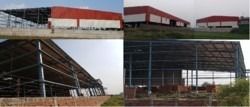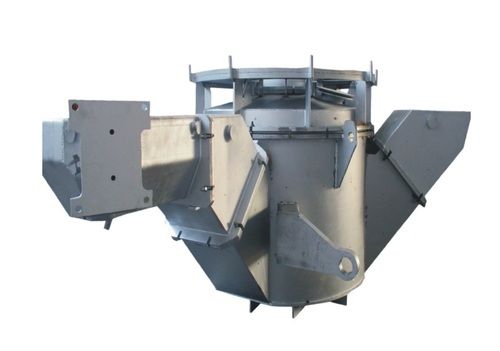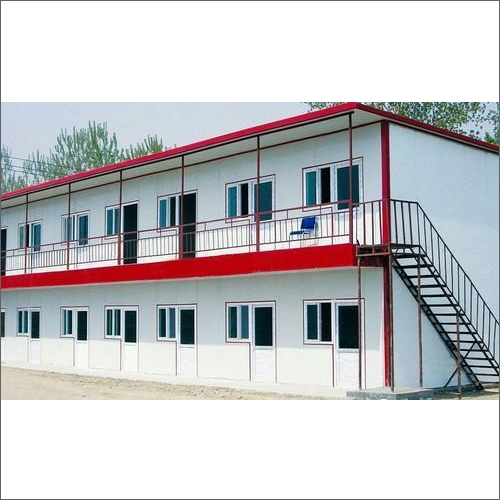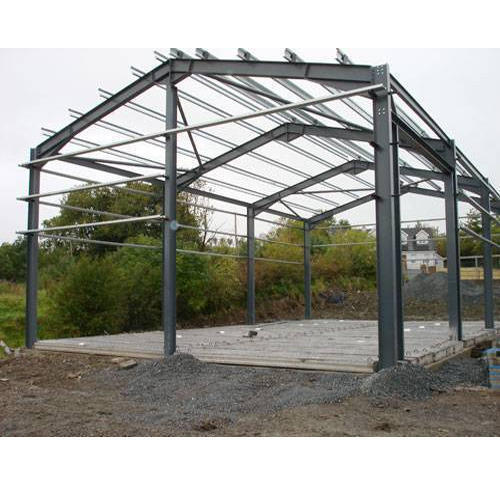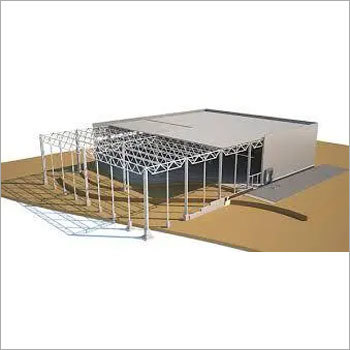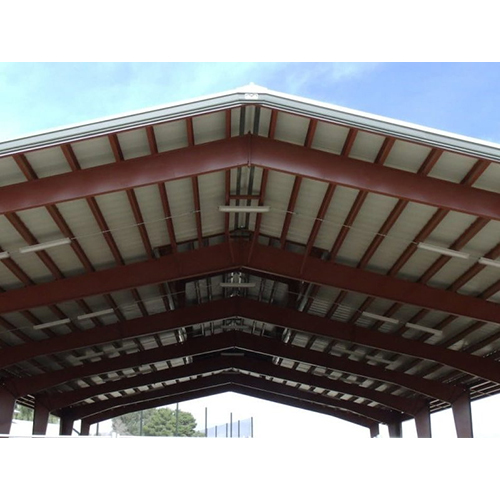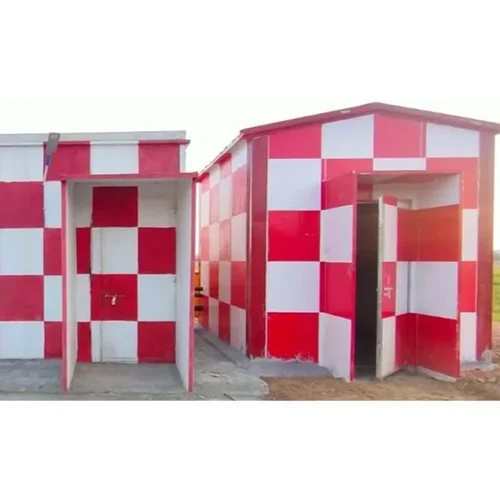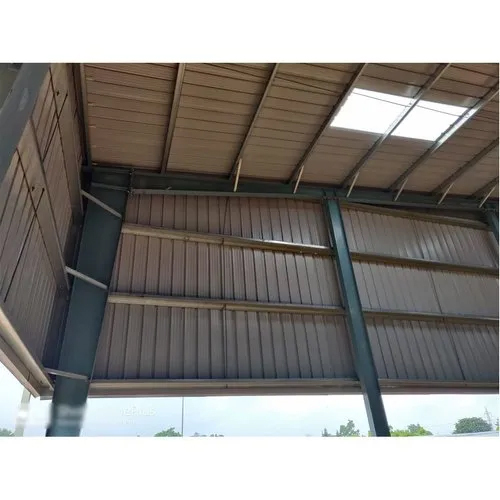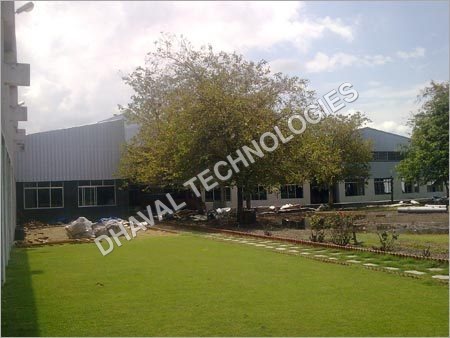- Tradeindia
- Prefabricated & Portable Buildings
- Prefabricated Structures
Prefabricated Structures
(815 products)Pre Fabricated Structures - Color: As Per Requirement
170 INR/Square Foot
MOQ50000 Square Foot/Square Foots
Window MaterialOther
Open StyleOther
ColorAs per Requirement
ConnectionAs per Design
InsulationOther
Door MaterialOther
Pre Fabricated Structures - Color: White
90.0 INR/Kilograms
MOQ50000 Kilograms/Kilograms
MaterialSteel
Roof MaterialSteel
Colorwhite
UseWarehouse, Plant, Shop, Kiosk
View More

Heavy Steel Prefabricated Structure - Color: Galvanised
Price : 95.0 INR

Structural Prefabricated Shed - Color: Green
Price : 90.0 INR

Prefabricated Factory Building - Color: Galvanised
Price : 90.0 INR

Prefabricated Tubular Structure - Color: Galvanised
Price : 90.0 INR
All Colour Pre Engineered Building
Price: 350 INR/Square Foot
MOQ1 Square Foot/Square Foots
Door Materialsandwich Board
ColorAll colour
Window Materialsandwich Board
InsulationOther
Wall MaterialsSandwich Panel
Open StyleSliding
Prefabricated Structure
Price: 100000 INR/Container
MOQ1 Container/Containers
Wall MaterialsOther, Insulated Sandwich Panel
InsulationOther, Polyurethane / EPS / Rockwool
Open StyleOther, Sliding / Hinged
Door MaterialOther, Steel
ConnectionBolt Connection
ColorBlue, White, Custom
National Portable Cabin
Thane
 Super Bonanza
Super Bonanza Trusted Seller
Trusted Seller Premium Seller
Premium Seller14 Years
Heavy Steel Prefabricated Structure - Color: Galvanised
Price: 95.0 INR/Kilograms
MOQ10000 Kilograms/Kilograms
MaterialSteel
Thickness Of Wall PanelCustomized Millimeter (mm)
ColorGalvanised,Color Coated
Reyna Infra Projects Llp
Mumbai
 Super Bonanza
Super Bonanza Trusted Seller
Trusted Seller7 Years
View More

Structural Prefabricated Shed - Color: Green
Price : 90.0 INR
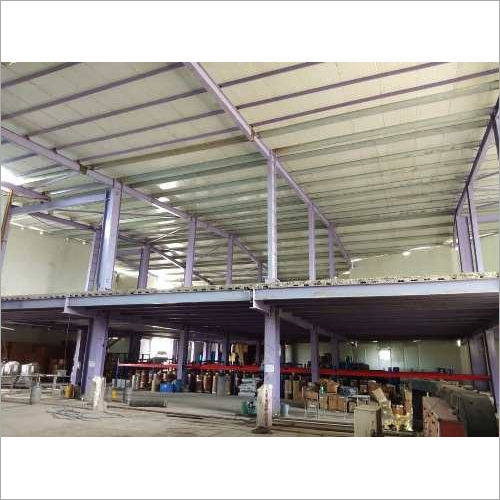
Pre Fabricated Structures - Color: White
Price : 90.0 INR

Prefabricated Factory Building - Color: Galvanised
Price : 90.0 INR

Prefabricated Tubular Structure - Color: Galvanised
Price : 90.0 INR
Light Weight Steel Structures - Steel Material, Custom Dimensions | Durable Design, Versatile Load Capacity, 25-Year Lifespan
Price: 250 INR/Square Foot
MOQ10000 Square Foot/Square Foots
Wall MaterialsSteel
Dimension (L*W*H)As per Requirement Inch (in)
ConnectionAs per Design
Life Span25 Yrs
MaterialSteel, Other
Roof MaterialSteel
Task Infracon Pvt. Ltd.
Faridabad
 Super Bonanza
Super Bonanza Trusted Seller
Trusted Seller2 Years
Prefabricated Structure - Steel, Warehouse Dimensions, Blue Color | Long Life Span, Highly Durable, Easy Installation
Price: 1000 INR/Square Foot
MOQ50 Square Foot/Square Foots
Life SpanLong Life
ColorBlue
MaterialSteel
UseWarehouse
Eeco Portable Solutions Private Limited
Thane
 Trusted Seller
Trusted Seller Super Premium
Super Premium Super Seller
Super Seller6 Years
View More
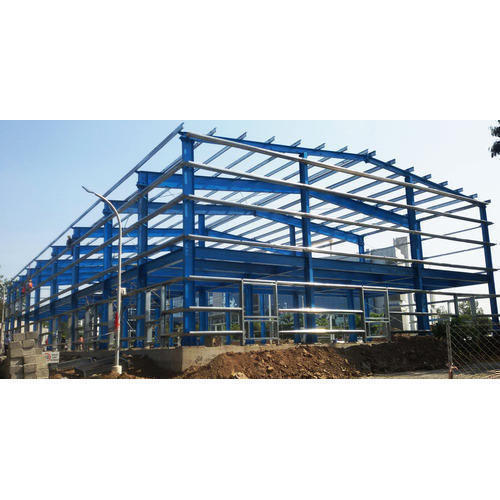
Prefabricated Structure
Get Best Deal
Prefabricated Structures - Color: As Per Requirement
Price: 400 INR/Square Foot
MOQ5000 Square Foot/Square Foots
Door MaterialPVC Window, sandwich Board, Other, Aluminum Window
Open StyleAutomatic
Wall MaterialsSteel, Sandwich Panel, Gypsum Board, PVC panel, Wooden, metal Sheet
InsulationGlass wool, Rock wool, PU, EPS, Other
ConnectionBolted
Window MaterialPVC Window, Aluminum Window, sandwich Board, Other
Padmadhara Structures Private Limited
Vadodara
 Trusted Seller
Trusted Seller Super Premium
Super Premium4 Years
Prefabricated Structures - Door Material: Aluminum Window
Price: 200 INR/Square Meter
MOQ500 Square Meter/Square Meters
Door MaterialAluminum Window
MaterialSteel
Roof MaterialSteel
Window StyleOther
UseWarehouse
Relinfinite Projexive Private Limited
Vadodara
 Trusted Seller
Trusted Seller Super Premium
Super Premium4 Years
Toilet Block - Metal and Fiber-Reinforced Panels, H: 2.5m x L: 3m x W: 1m, White Color, Insulated Single Metal Door, Durable Roof Options
Wall MaterialsOther, Fiber-reinforced panels with metal supports
Door MaterialOther, Metal
Life Span10-15 years
Dimension (L*W*H)Custom dimensions approximate H: 2.5m L: 3m W: 1m
Open StyleOther, Hinge door
InsulationOther, Basic wall insulation
Everest Composites Pvt. Ltd.
Vadodara
 Trusted Seller
Trusted Seller Super Seller
Super Seller18 Years
Prefab Accommodation Units - Color: White Blue
Price: 380.00 INR/Square Foot
MOQ1500 , Square Foot/Square Foots
ConnectionNails, bolts, and welding
Life SpanLonger lifespan
Open StyleSwing
ColorWhite Blue
MaterialSteel
Roof MaterialSteel
The Young Entrepreneurs
Jaipur
 Trusted Seller
Trusted Seller Super Seller
Super Seller Premium Seller
Premium Seller13 Years
View More

Prefabricated Office Structure - Color: White
Price : 750 INR

Prefabricated Structures - Color: White
Price : 450.00 INR
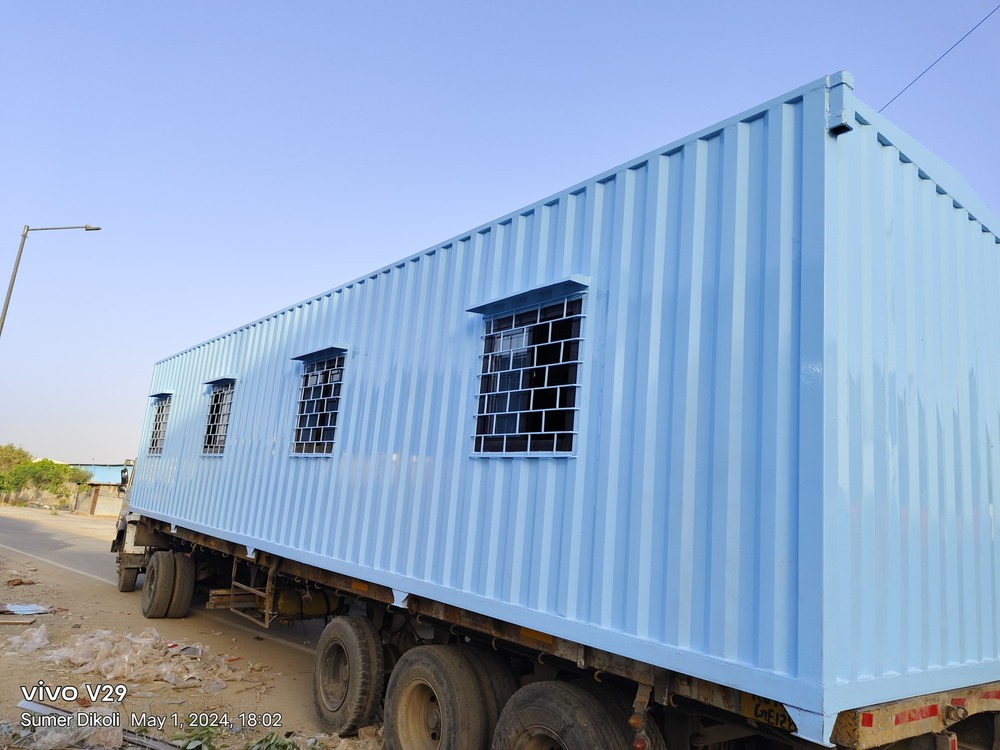
Office Cabins - Color: White
Price : 295000 INR
Prefabricated Roof Top Hostel - Color: White
Price: 950 INR/Square Foot
MOQ100 Square Foot/Square Foots
ColorWhite
MaterialSteel
Roof MaterialSteel
WindowOther
Window StyleOther
UseHouse
Pressmach Infrastructure Pvt Ltd.
Chennai
 Trusted Seller
Trusted Seller Super Seller
Super Seller3 Years
View More

Prefabricated Structure - Color: White
Get Best Deal

Prefabricated Structure - Color: White And Yellow
Price : 1400 INR

Prefabricated E House Structure - Color: Yellow
Price : 1200 INR

Prefabricated Marketing Lounge Structure - Color: Gray
Price : 1900 INR

Office Cum Prefabricated Structure - Color: Brown
Price : 950 INR
Prefabricated Structures - Color: Grey
Price: 300.00 INR/Square Foot
MOQ8000 Square Foot/Square Foots
ColorGrey
MaterialSteel
Roof MaterialOther
WindowOther
Window StyleOther
UseOther
Unitech Structural Works
Kolkata
 Trusted Seller
Trusted Seller Super Seller
Super Seller Premium Seller
Premium Seller4 Years
View More

Prefabricated Steel Building Structure - Color: Grey
Price : 250 INR

Prefabricated Buildings - Color: Grey
Price : 300.00 INR

Prefabricated Steel Building Structure - Color: Grey
Price : 250 INR
Prefabricated Steel Structure - Steel Material, Modular Design, Easily Assembled | Ideal for Warehouse, House, Office Use, Low Maintenance, Durable
Price: 250 INR/Square Foot
MOQ5000 Square Foot/Square Foots
Roof MaterialSteel
Top Rated Products

Prefabricated Structure - Steel, Warehouse Dimensions, Blue Color | Long Life Span, Highly Durable, Easy Installation
Eeco Portable Solutions Private Limited
FAQs Related to Prefabricated Structures
Heavy Structural Fabrication Works
Price: 95 INR/Kilograms
MOQ500 Kilograms/Kilograms
FOB PortVADODARA
Payment TermsLetter of Credit (L/C), Letter of Credit at Sight (Sight L/C), Western Union, Cash Advance (CA), Cash in Advance (CID)
Supply Ability100000 Per Month
Shree Sarjan Industries Pvt. Ltd.
Vadodara
 Trusted Seller
Trusted Seller Super Seller
Super Seller Premium Seller
Premium Seller10 Years
High Quality Prefabricated Buildings Structures
Price: 1500.0 INR/Square Foot
MOQ1 Square Foot/Square Foots
Product TypePrefabricated Buildings Structures
Main MaterialMetal
Surface TreatmentPainted
SizeAs Per Requirement
UsageIndustrial
FeatureHigh Quality
Prefabricated Metal Structure - Color: Multicolor
Price Trend: 200.00 - 350.00 INR/Square Foot
MOQ5000 , Square Foot/Square Foots
MaterialSteel
Roof MaterialSteel
Thickness Of Wall Panel10mm Micrometers (um)
Window StyleSliding Window
ColorMulticolor
UseWarehouse, Workshop
Multitech Infracon Private Limited
Kashipur
 Trusted Seller
Trusted Seller Super Seller
Super Seller Premium Seller
Premium Seller9 Years
Pvc Prefabricated Showroom Structure
Price: 390 INR/Square Foot
MOQ100 Square Foot/Square Foots
Floor MaterialPVC
UseWarehouse
Peb Surya Infra Steel Pvt. Ltd.
Pune
 Trusted Seller
Trusted Seller Super Seller
Super Seller3 Years
View More
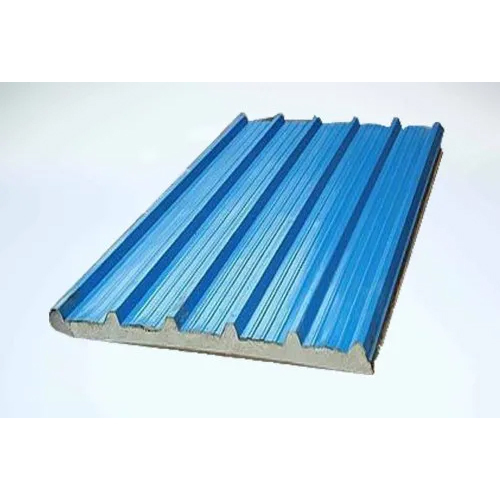
Insulated PUF Panel - 48 mm Thickness | Pre-Engineered, Economical Prefabricated Showroom Structure
Price : 1200 INR

Prefabricated Steel Structure - Durable Steel Material, 22 mm Wall Panels, Versatile Floor and Roof Steel
Price : 90 INR

Ms Prefabricated Shed Structure
Price : 350 INR

Ss Prefabricated Warehouse Structure
Price : 450 INR
Silver Supermarket Shopping Trolley
Price: 2850 INR/Unit
MOQ10 Piece/Pieces
ColorSilver
Wall MaterialsSteel
Open StyleFolding
MaterialSteel
Roof MaterialSteel
Floor Load50-100 Kilograms (kg)
Slotking India Storage System Private Limited
North Delhi
 Trusted Seller
Trusted Seller Super Seller
Super Seller7 Years
Durable Prefabricated Steel Shed - High-Grade Steel with Metal Sheet Roof, Glass Wool & Rock Wool Insulation | IS Welding Code Compliant Design
Price: 250 INR/Square Foot
MOQ10000 Square Foot/Square Foots
InsulationGlass wool, Rock wool
Wall Materialsmetal Sheet
Window MaterialOther
Open StyleOther
Door MaterialOther
Roof Materialmetal Sheet
Droit Steel Buildings Private Limited
Kolkata
 Trusted Seller
Trusted Seller Super Seller
Super Seller11 Years
Multi Story Prefabricated Buildings - Color: Off White
Price: 250.0 INR/Square Foot
MOQ100 Square Foot/Square Foots, Square Foot/Square Foots, Square Foot/Square Foots
Window MaterialAluminum Window
Wall MaterialsSandwich Panel
Open StyleSwing
Dimension (L*W*H)Custom Foot (ft)
ColorOFF WHITE
InsulationPU
Prefabricated Industrial Structures
Price: 1000 INR/Square Foot
MOQ10000 Square Foot/Square Foots
Supply Ability300000 Per Month
Delivery Time2 Week
View More
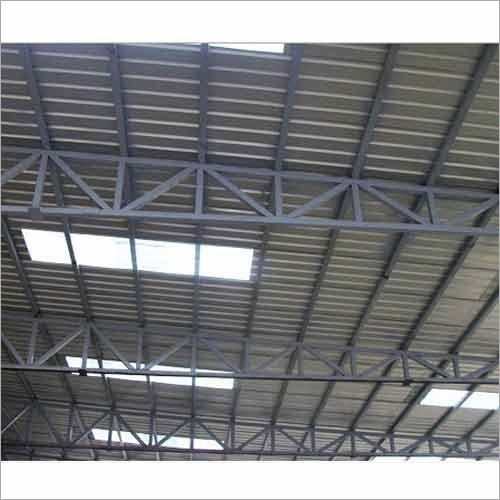
Steel Structure Building - Stainless Steel , Prefabricated , Weather-Resistant and Corrosion-Free Solution for Commercial and Industrial Use
Price : 1000 INR

Prefabricated University Building Structure
Get Best Deal

Prefabricated Building Structure - Steel Framework, Customizable Modular Design, Quick Assembly Solutions
Get Best Deal

Prefabricated Mezzanine Floor Building Structure
Get Best Deal

Steel Structures - Robust Steel Frameworks | Durable, Versatile Designs for Industrial Applications
Price Trend : 50000.00 - 500000.00

Prefabricated Cold Storage Building Structure
Get Best Deal
Frangible Huts For Aerodromes - Color: Red
Price: 200000 INR/Square Meter
MOQ100 Square Meter/Square Meters
Door MaterialPVC Window
ColorRed
Roof MaterialAluminum sheet
Thickness Of Wall Panel20 Millimeter (mm)
Floor Materialcemented
Vahrk Enterprises Private Limited
Ghaziabad
 Trusted Seller
Trusted Seller2 Years
Commercial Prefabricated Structure Service - Floor Material: Mild Steel
Price: 410 INR/Square Foot
MOQ1000 Square Foot/Square Foots
MaterialSteel
Roof MaterialSteel
Floor MaterialMild Steel
R. K. Engineering Works
Guwahati
 Trusted Seller
Trusted Seller Premium Seller
Premium Seller6 Years
View More
Prefabricated Structure - Material: Iron
Price: 78 INR/Kilograms
MOQ1000 Kilograms/Kilograms
MaterialIron
Tile MaterialColor Steel Plate
Tile TypePlain Roof Tiles
TypePrefabricated Structure
PatternPlain
Thickness0.50 or 0.45 Millimeter (mm)
Cnd Engineering Pvt. Ltd.
Kolkata
 Trusted Seller
Trusted Seller Premium Seller
Premium Seller8 Years
Prefabricated Structures - Roof Material: Steel
Price Trend: 800.00 - 1500.00 INR/Square Foot
MOQ1000 Square Foot/Square Foots
Wall MaterialsSteel
Door MaterialAluminum Window, Other
MaterialContainer, Foamed Tile, Asphalt Tile, Aluminum sheet, EPS, Rock wool, metal Sheet, Other, PU Panel
Roof MaterialSteel, Aluminum sheet, metal Sheet
View More

Prefab Factory Buildings
Price Trend : 5500.00 - 6500.00 INR

Steel Sheds - Mild Steel Warehouse/Factory Unit | Multicolour, Sliding Door, PVC Windows, 10-Year Lifespan, Metal Sheet Roof
Price : 6000 INR

Prefabricated Buildings - Steel Frame Structure, Modular Design, Customizable Layouts, Quick Assembly
Price Trend : 5500.00 - 6500.00 INR
Prefabricated Structures - Steel Construction, 20x08x8.6 Feet, White Color | Aluminum Sliding Windows, Water-Resistant Walls, Insulated Flooring
Price: 1000 INR/Foot
MOQ50 Foot/Feet
Dimension (L*W*H)20x08x8.6 Foot (ft)
InsulationGlass wool
Life Span8-10 Years
Open StyleVertical
Window MaterialAluminum Window
Door MaterialOther
Zigma Cabin Pvt. Ltd.
Thane
 Trusted Seller
Trusted Seller Premium Seller
Premium Seller16 Years
Prefabricated Customize Structure - Color: Grey
MOQ100 Square Foot/Square Foots
Life SpanLong Life
Roof MaterialSteel
Thickness Of Wall PanelDifferent available Millimeter (mm)
ColorGrey
UseWarehouse, Workshop
6000Sq Feet IT Incubation Center
Price: 1950 INR/Square Foot
MOQ100000 Square Foot/Square Foots
Supply Ability10 Per Month
Delivery Time7 Days
Prefabricated Structure - Rust Resistant Metal | Long Lasting, Spacious Design for Warehouse, Workshop, Plant - White Finish
ColorWhite
UseWarehouse, Workshop, Plant
Latest from Prefabricated Structures
Prefabricated Structures
By:
Dharani Engineering & Co
22 Feet MS Prefabricated Structures
By:
Shree Krishna Pre-engineered Building
Popular Prefabricated Structures
Prefabricated Structures- An Introduction
The use of prefabricated technologies is not a new thing. In fact, prefab technologies have long shaped the construction sector of many advanced nations. Today, these technologies are embraced by many builders and realtors in developing countries too. Before we delve further, let us begin by understanding what prefabricated structures or prefabs are. Prefabs are buildings whose individual construction elements or components like floors, walls and roofs are made in a factory, a manufacturing plant or in a factory-like setting in advance, and only then transferred to the construction site or worksite for assembly. In certain cases, the components are also fully or partially assembled in the factory or plant before being transferred to the site. In industry, prefabs are made using a variety of prefabricated structure materials and are popularly known as Pre-Engineered Buildings (PEBs).
The Two Stages of Prefabrication
The construction of Pre-Engineered Buildings (PEBs) begins with the structure drawing. The structure design engineers after in-depth observation & analysis prepare the drawing and refer it to build the structure as per the relevant building codes and approved Quality Assurance Plan (QAP), while adhering to the client need & budget.
- First Stage: Components are manufactured in a factory, a manufacturing plant or in a factory-like setting, which is not the final location of construction.
- Second Stage: Components are shipped and the structure is erected in the final location of construction.
Advantages of Prefabrication- Technical, Economic & Sustainability Merits
Realty developers who are keen on adopting modern construction techniques to boost their works and compress delivery time-frames often favour prefabrication to the traditional ‘brick and mortar’ construction model while building permanent, semi-permanent or temporary facilities, including construction facilities, apartment blocks, healthcare camps, office spaces, evacuation centers, schools, colleges, etc. Time being money when it comes to building structures, prefabrication can often help in reducing the overall construction time and lend better resilience and quality to the building. To put simply, prefabrication is the best way for economizing time, effort, wages, and resources utilized in civil construction.
Prefabricated Structures can be considered advantageous for many good reasons, such as:
-
Precision: Such structures being made using self-supporting ready-made components reduce the need for formwork, shuttering and scaffolding, also giving factory precision to the components built. This is not the case with conventional construction methods.
-
Speed: Building anything from the ground up is time consuming. Fast turnaround is an advantage of prefab structures that are easier to erect and can be constructed in much less time.
-
Safety: Prefab structures made using durable materials can withstand the strongest of winds and earthquakes. As natural disasters continue to rise, prefabs are a smarter choice for constructing buildings, especially in disaster prone areas.
-
Quality: Prefabrication is always in demand as it minimizes the on-site congestion of sites, i.e., site disturbance, also helping one attain better quality control through factory assembly line setting. Besides, better thermal and sound insulation is witnessed in case of prefab structures.
-
Cost Efficiency: Any site where skilled labour, space and other resources are readily available can be transformed into a prefabrication site, which greatly reduces the total project cost. Cost also gets reduced as there is less wastage of construction material with prefabrication as compared to other traditional methods.
-
Technology: Latest fabrication technologies coupled with emerging CAD is expected to lend a further edge in the field of modular construction.
Apart from various cost and construction benefits, prefabricated structures also come with many environmental and social benefits. Especially, climate change that has intensified natural calamities in recent years have made prefabrication much preferable as an alternative method of construction because of its resiliency. Prefabs prove to be more affordable and durable than replacing damaged buildings in hostile post-disaster conditions. Therefore, home owners and construction companies of coastal areas that are more prone to hurricanes or tropical storms prefer these systems to minimize the effects of adverse climatic conditions on the infrastructural landscape and greatly improve community resilience in the process.
Environmental Impact- Prefab Versus Conventional Structures
Traditional construction methods used for erecting cast-in-situ buildings consume natural resources in excess, also leading to serious green-house gas emissions. Modern research also underlines that Prefab Versus Conventional Structures constructed at the same time and even in the same location show a marked difference in their carbon emission levels. Even when one considers the entire life cycle of buildings, there is minimal impact of prefabs on environmental damage as opposed to traditional cast-in-situ buildings.
Uses of Prefabrication
Apart from being utilized in the construction of large buildings, prefabrication is also used for building prefab concrete and steel sections in structures, mostly in cases where one building element needs to be repeated multiple times. Prefabrication comes handy in constructing apartment blocks and housing developments with repeated housing units, office blocks, factory buildings, storage houses, etc. Glass and steel sections are often prefabricated off site for use in the exteriors of huge structures and buildings. Prefabrication is also largely used for building mobile phone radio towers, aircrafts, etc.
Prefabricated Building Materials
With evolving technology, definition of modular construction too has attained a new meaning. Today, different materials go into the making of prefabs, which mostly are decided by the manufacturer. Manufacturers take note of specifications and budget of the customers before beginning any prefab project. Primarily, they use the following materials for prefabrication:
-
Steel: Modern construction relies on the versatility and strength of steel. Though its weight and rigidity make it a bit difficult to mould, steel can be shaped into any form with the right skills, technologies, and tools. Steel makes prefabs durable and fire-resistant. Besides, steel-framed modular structures are easier to assemble than the ones made of wood.
-
Wood: Wood being lighter than most materials is often chosen for prefab construction. Any framework can be crafted from a piece of wood. Sustainable species are usually preferred, which can even be reused and recycled into other materials. Medium-density fibreboard (MDF) and particle boards made of recycled wood are ideal for framing. Wood-frame structures made of durable wood are chosen to build structures that are expected to last thousands of years.
-
Concrete & Cement: Concrete plays a valuable role in prefab construction. Processes like manufacturing, moulding, drying, and curing steel-reinforced concrete or cement sections can be done in a factory setting where factors like ambient humidity and temperature can be easily regulated as per the need. Concrete used to engineer the core of a building can lend maximum support to the rest of the structure with its inherent strength.
Common Prefabricated Systems
Underlined below are the most common types of prefab systems used in the construction industry:
-
Panelized Wood Framing: Prefabricated Systems designed in the form of Panelized Wood Framing can make roof construction a safer, time saving and easier affair. In such cases, laminated timber is utilized for making long, sturdy pieces of frames, which are then covered either by plywood or board roof decks.
-
Sandwich Panels: For maximum structural stability, Sandwich Panels fabricated from thin facings of materials are often used. Facings made from materials like concrete, plywood, or stainless steel (SS) are used, which are then stuck to an insulating core. The core can be constructed of foam, rubber, paper or even textile (cloth).
-
Steel Framing: Prefab panels engineered from durable steel has become a prefabricated building material of choice for constructing commercial and residential structures.
-
Timber Framing: This type of framing though is not too common a practice used in India is widely used in building structures in other countries. Timber framings that are casted in factories or factory like settings are often used in building timber homes.
-
Concrete Systems: Concrete fragments engineered in the factory instead of being built on site can help in improving the look and feel of a building. The process also proves to be quite time saving.
-
Modular Systems: Here, the entire building structure is erected from factory-constructed assemblies and units that are hauled to the final construction site. These units made in various sizes and specifications are then connected to the prepared foundation.
Industry Applications
The lean construction mode of prefab is majorly utilized in the following areas:
-
Airports
-
Commercial Buildings
-
Engineering & Manufacturing
-
Infrastructure
-
Automobiles
-
Healthcare
-
Power
-
Textile
-
Retail
-
Warehousing & Logistics
Prefabricated Structure Specification
-
Foundation & Plinth
-
Structure
-
Flooring System
-
Walls
-
Roofing System
-
Windows & Doors
-
Mechanical, Engineering & Plumbing
Prefabricated Structure in India/ Prefabrication in India
Though many countries like Japan, USA, Europe, and Canada began transforming their infrastructural landscapes with prefabricated structures ages ago, prefabrication as a process gained ground in India only in 1950 when Hindustan Housing Factory was established with the aim of solving the housing problem created in India in the face of the refugee influx from West Pakistan. The company, the pioneer of prefab structure design and technology in India, was the first to throw light on the fact how prefab technology could generate instantaneous low-income housing solutions as compared to traditional brick-and-mortar structures. The target market which was earlier only the low-income group soon expanded and included hotels, up-market residences, commercial complexes, public utility buildings, etc.
Today, prefab structures, though popular in the civil construction sector of other countries, are still not a widely-adopted means of building structures in India. The method has not managed to attain the confidence of skeptical Indians, mainly because they are not completely aware of its benefits and simply see it as a low-income housing alternative. For many others, prefabrication conjures up images of unrealistic homes that come with unexpected risks. No wonder, the market of prefabricated buildings almost stands on the sidelines, accounting only 1% of the $100 Billion Real Estate Market of India.
The Takeaway
Prefabrication will soon be one of the finest examples of technological evolution, innovation & excellence.
With the rising population in India, many Indian construction companies, realtors, and builders have begun responding smartly to the need of the hour by gravitating towards prefabrication when taking construction projects related to building housing societies, malls, hospitals, schools, etc. The mission is to break the confines of traditional building methods, keep pace with the global construction industry, embrace innovative construction materials and construction techniques, and offer revolutionary prefab building solutions with many added benefits. According to many recent reports, the next decade will see prefab construction taking a giant leap in India supported by several reforms initiated & announced by the Indian Government and we all are more than optimistic.
FAQs: Prefabricated Structures
Q. What is a PEB or a Pre-Engineered Building?
Ans: A PEB or a Pre-Engineered Building is a building whose structural elements are constructed off-site as per a predetermined structural drawing. The elements are then transported to the final location of construction for installation.
Q. What is the average time taken to construct a prefab?
Ans: The construction procedure of a prefab is quick, and the time taken for construction is almost 30 to 50 percent less than a conventional brick and mortar structure.
Q. Are steel framed prefab structures safe in lightning?
Ans: Yes, steel framed prefabs are safe in lightning and score high in terms of protection.
Q. What is the price of a prefab building or structure?
Ans: The price of a prefab may vary depending on the building design, application, aesthetics, and technical configuration.
Q. What is the longevity of a prefabricated structure?
Ans: Prefabs are designed to last for years. The exact life of a prefab depends on its technical specifications.
Explore Prefabricated Structures at Tradeindia
Tradeindia networks with specialist providers of Prefabricated Structures who contribute significantly to India’s infrastructural development and whose products are a blend of innovative ideas and cost-effective construction technologies. All the players have track records of providing innovative yet affordable housing options and keeping up with tight deadlines.
Client Testimonials & Reviews

RajeshPoddar
GLOBAL TENSILE STRUCTURE
We are associated with tradeindia from last 1 year and this platform helped us to improve and grow our business, branding and promotion. I am getting good inquires and I expect the same in the future.

AnilKumar
ARIES PRE FAB PVT. LTD.
I am member of tradeindia since last 5 to 6 years and am very happy with tradeindia service. I am fully satisfied with tradeindia service due to good promotion, good inquiries and good visibility.

DilipSharma
TRADEWILL INTERIORS
We get good business through tradeindia.com. Tradeindia.com is helping our company to introduce our products in Indian and Global market. We wish all the best to tradeindia team and hope for your continuous support in the coming years.

Shaveen Mehta
MULTI DECOR INDIA PVT. LTD.
We are satisfied with the services of tradeindia as it has been more than 6 years with them and they have provided us full support whenever we needed. Hoping for the best service from tradeindia in future.

K.Azeez
UNIQUE ENGINEERING WORKS
We are the member of tradeindia for past six years. We felt very happy for same and proudly say investing money at tradeindia in use. Kindly support and give me best services in future also.
Prefabricated Structures Price List
This Data was Last Updated on 2025-12-18
Prefabricated Structures Manufacturers | Suppliers in India
Company Name | Member Since |
|---|---|
Everest Composites Pvt. Ltd. Vadodara, India | 18 Years |
Zigma Cabin Pvt. Ltd. Thane, India | 16 Years |
National Portable Cabin Thane, India | 14 Years |
Seltech Metal Building & Roofing Solution Greater Noida, India | 14 Years |
The Young Entrepreneurs Jaipur, India | 13 Years |
Dhaval Technologies Llp Pune, India | 13 Years |
Santani Steel Vadodara, India | 11 Years |
Droit Steel Buildings Private Limited Kolkata, India | 11 Years |
Balaji Roofing Vadodara, India | 10 Years |
Shree Sarjan Industries Pvt. Ltd. Vadodara, India | 10 Years |
Upcoming Tradeshows
CWIEME Shanghai 2026
Wed, 24 Jun, 2026 - Fri, 26 Jun, 2026
INDOMACH Jamshedpur 2026
Thu, 05 Feb, 2026 - Sun, 08 Feb, 2026
Asia Photonics Expo (APE 2026)
Wed, 04 Feb, 2026 - Fri, 06 Feb, 2026
IFF - India Fashion Forum 2026
Wed, 28 Jan, 2026 - Thu, 29 Jan, 2026
INTERNATIONAL CAFE AND BEVERAGE SHOW (ICBS) 2026
Thu, 07 May, 2026 - Sat, 09 May, 2026
AutoTechnika 2026
Fri, 05 Jun, 2026 - Sun, 07 Jun, 2026
Wall Floor & Ceiling Expo 2026
Mon, 13 Apr, 2026 - Wed, 15 Apr, 2026
Power On 2026
Fri, 23 Jan, 2026 - Sun, 25 Jan, 2026
AGROWORLD EXPO 2026
Fri, 20 Feb, 2026 - Mon, 23 Feb, 2026
Odisha Mining & Infrastructure International Expo 2026
Thu, 08 Jan, 2026 - Sun, 11 Jan, 2026
Popular Categories




